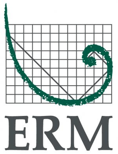Each year, ERM conducts a formal materiality assessment in accordance with the GRI to identify and prioritize our most significant sustainability topics, set KPIs and targets for improvement, and guide the content for our Sustainability Report.
Determining material topics
The materiality assessment sets out our material topics going forward (for FY18 – the current financial year commencing 1 April 2017) as well as guiding the content for this FY17 Sustainability Report.
We undertook the following approach to determine the material topics for this report:
- We drew on a wide range of inputs to develop a view on what matters to our internal and external stakeholders, including extensive interviews, surveys and benchmarking.
- We expanded our understanding of ERM’s sustainability context through our involvement in various global organizations, including the World Business Council for Sustainable Development.
- We considered the implications of megatrends affecting society and our clients as well as the Sustainable Development Goals. Senior management reviewed the company’s key business issues.
- We created a matrix of key issues. Internal sustainability experts and business leaders applied the Content Principles and assessed the potential environmental, social and economic impacts – beyond the impacts on our business.
- Based on this assignment, senior management agreed on the material sustainability issues for our business going forward.
- We reviewed the GRI Aspects and, where relevant, assigned indicators, which are outlined in our GRI index.
- In order to drive performance improvement, we established key performance indicators and targets directly related to our material issues. We report on our performance against the FY17 targets in the report.
Both internal and external factors determine what we considered to be material. These include, but are not limited to, the following:
- Reasonably estimable economic, environmental, and social impacts;
- The interests and expectations of internal stakeholders specifically invested in ERM;
- Broader economic, social, and environmental interests and topics raised by our external stakeholders;
- The main topics and future challenges for our sector, as identified by peers and competitors;
- Laws, regulations, international agreements, and voluntary agreements of strategic significance to our organization and our stakeholders;
- Key organizational values, policies, strategies, operational management systems, goals and targets;
- ERM’s core competencies and the manner in which they can contribute to sustainable development; and
- Consequences for ERM that are related to our impacts on the economy, the environment, and society. For each of the material topics, ERM defined the boundary of impact, and its relationship to the GRI standards and ERM’s strategic business drivers.
For each of the material topics, ERM defined the boundary of impact, and its relationship to the GRI Standards and ERM’s strategic business drivers (see below).
These material topics are very similar to the issues identified in last year’s assessment, but reveal slight differences relating to our impact on the external world. We have developed targets, key performance indicators and metrics specifically to address each of our material topics for FY18 and beyond.
Governance
GovernanceBoundary
Internal and external (e.g., supply chain & clients)
-
GRI sub-topics
Anti-corruption, non-discriminationStrategic driver
Management excellence
Our people
Our peopleBoundary
Internal and external (e.g., meeting client needs & reflecting local communities)
-
GRI sub-topic
Diversity and equal opportunityStrategic driver
Attracting and retaining staff
Occupational health & safety
Health & safetyBoundary
Internal and external (e.g., travel & client sites)
-
GRI sub-topic
Occupational health & safetyStrategic driver
Duty of care
Climate change
Boundary
Internal and external (e.g., travel)
-
GRI sub-topic
Emissions, Energy use
Strategic drivers
Leadership position in the transition to lower-carbon future
Innovating with clients and other leading organizations
Boundary
Internal and external (e.g., clients & organizations)
-
GRI sub-topic
General disclosuresStrategic driver
Responding to changing client needs
Contributing to society & local communities
Boundary
Internal and external (e.g., Foundation projects & programs)
-
GRI sub-topic
Local communitiesStrategic driver
Demonstrating investment in society and local communities



